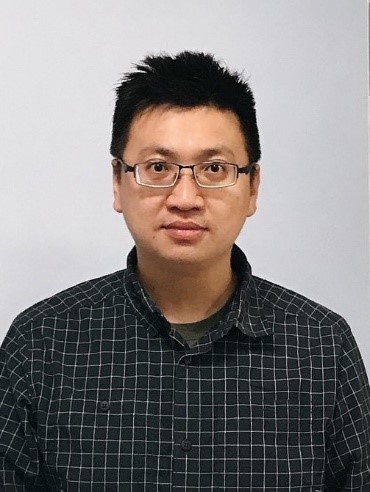論壇演講者資訊

Prof. Yung-Tin Pan
Developing Electrode Catalyst Materials for the Realization of Hydrogen Economy
Department of Chemical Engineering, National Tsing-Hua University
同步輻射與材料論壇 理工二館 2樓 A2-248
Saturday, Nov 19, 2022, 11:00-11:30 a.m.
Polymer electrolyte membrane fuel cells (PEMFC) and water electrolysis (PEMWE) are two key technologies for the realization of hydrogen economy. Despite being the type of electrochemical conversion device with the highest power density, PEM-based technologies suffer from high materials cost due to the necessity of using expensive precious group metals (PGMs) as electrode catalysts to overcome activation voltage losses. To make PEMFC and PEMWE more economically viable, low PGM loaded electrodes were achieved through enhancing the intrinsic activity of PGM-based catalysts. We have developed molybdenum (Mo) promoted intermetallic platinum-cobalt (Pt-Co) oxygen reduction reaction (ORR) and tungsten oxide nanowire supported iridium (Ir@WOxNW) oxygen evolution reaction (OER) catalysts. The developed ORR and OER catalysts showed compelling performance over commercially available benchmark catalysts, even under membrane electrode assembly (MEA) testing conditions. Synchrotron-based X-ray absorption spectroscopy (XAS) and X-ray photoelectron spectroscopy (XPS) were implemented to study the important electronic properties of the aforementioned catalysts. Critical information was obtained to accurately describe the materials structure as well as its corresponding oxygen-bonding property, which serves as a key descriptor for ORR and OER activities.

Prof. Ming-Chung Wu
Synthesis, Characterization, and Application of Solar Energy Materials
長庚大學化工與材料工程學系
同步輻射與材料論壇 理工二館 2樓 A2-248
Saturday, Nov 19, 2022, 11:30-12:00 a.m.
The global energy crisis shows the urgent need to accelerate the development of green energy. In this talk, I will present two emerging energy technologies: (1) perovskite solar cells (PSCs); and (2) photocatalytic materials for energy production. For the PSCs study, we focus on developing lead-reduced perovskite absorbers and the metal-doped TiO2 electron transport layers. Strategies, including interfacial modification, stabilization of the crystal phase of perovskite, etc., have been implemented and achieved a power conversion efficiency (PCE) of 21.4%. Lead poisoning from perovskite absorbers affects every one of the body's organ systems, especially the nervous system. Partial replacing lead (10 mol%) with barium can maintain the PCE of 19.1%. For the photocatalytic material study, we focus mainly on metal doping, noble metal decoration, and construction of heterostructure to explore new strategies to design high-performance photocatalytic material. The photocatalytic materials synthesized by the hydrothermal process show the advantages of cost-effectiveness, high-efficient visible-light absorption, and large specific surface area, which are vital for developing efficient catalytic materials. Therefore, it is crucial to understand the crystal structure and the overall chemical state for solar energy materials. We used X-ray Scattering (TLS-BL13A1) and Extended X-ray Absorption Fine Structure (EXAFS, TLS-BL01C1 and TLS-BL17A1) to find the solar energy materials' local electronic structures, and will help us realize solar energy materials' physical and chemical properties to obtain high-efficiency green energy.

Prof. Cheng-Yu Wang
Alloying Behavior in MOF-derived Carbon Characterized via X-ray Diffraction, Scattering, and Absorption at National Synchrotron Radiation Research Center
Department of Materials Science and Engineering, National Yang Ming Chiao Tung University
同步輻射與材料論壇 理工二館 2樓 A2-248
Saturday, Nov 19, 2022, 2:00-2:30 p.m.
Metal-organic framework (MOF) derived carbon (MDC) with metal nanoparticles have been utilized in catalysis. The thermal treatment for MOF pyrolysis strongly affects the alloying behavior of the residual metal clusters, but the detailed characterization is lacking. In this presentation, we applied core@shell and high-entropy MOFs (HE-MOFs) for pyrolysis, and further obtained the in-situ and ex-situ alloying characterizations from the National Synchrotron Radiation Research Center (NSRRC) will be discussed, including the high-resolution powder X-ray diffraction (HRPXRD), the small-angle X-ray scattering (SAXS), the X-ray absorption spectroscopy (XAS) for the X-ray absorption near-edge structure (XANES) and the extended X-ray absorption fine structure (EXAFS). We observed that with proper thermal treatments on MOF degradation, metastable phase could be preserved without dissipation. Furthermore, high entropy alloy (HEA) nanoparticles on porous MDCs were obtained and confirmed with detailed characterization from NSRRC.